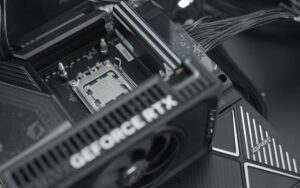
The PS5 Pro has finally been announced by Sony and currently this announcement is making a lot of noise, but not in a positive way. Many people claim that the new improved version of the console does not bring significant differences, especially for the price it is charged.
In light of this, we have an analysis by the folks at Digital Foundry, more precisely by Oliver Mackenzie and Alex Battaglia, showing in a little more detail how PSSR – PlayStation Spectral Super Resolution – the console’s new AI upscaling technology, can elevate games to 4K.
Read also:
Does the PS5 Pro’s high price confirm that Sony is the “Apple of video games”?
Don’t count on GTA 6 at 60 FPS on PS5 Pro
Understanding the PSSR
During Sony’s presentation for the new PS5 Pro, it was said that the console would come with 3 major new features. In addition to a larger and more powerful CPU and improvements in ray tracing, they also announced PSSR technology, which is responsible for upscaling games using artificial intelligence.
In practice, this tool can improve the quality of games so that they are as close as possible to 4K, even when they have lower internal resolutions. It is a technology comparable to Nvidia’s DLSS.
The objective is precisely to improve the visual quality of the game without overloading the system, which means there are extra resources left to improve other aspects of the games, such as lighting and reflections.
Analysis included games from Sony and third parties
The analysis was done through a video that was made available to the press in higher quality after the event. This way, they were able to analyze the new features of the PS5 Pro better and more calmly, without the cuts and compressions made by YouTube during the official presentation.
Most games used PSSR to achieve 4K resolution outputs, and they were able to calculate the internal resolutions of some of them.
One of the titles reviewed was The Last of Us Part 2, which was shown at its native 1440p resolution, as it runs in Performance mode on the Standard PS5, but this time using PSSR instead of the standard model’s basic upscaling. In this case, they found it delivered a comparable presentation to native 4K.
In Ratchet and Clank: Rift Apart, in the standard model and in performance mode it shows an internal resolution that varies from 1440p and 1800p, but with PSSR it starts to deliver a 4K output.
Alan Wake had two performance options, one running at 1260p at 30fps and the other at 864p at 60fps. Both versions used PSSR to improve the final quality. While Gran Turismo 7 featured ray-traced reflections at 1080p, the internal resolution dropped to 1188p for gameplay scenes, with PSSR providing a 4K output.
PSSR is still an evolution
Given the analysis, they reflect that, although this new Sony technology is still in its early stages, it already shows an interesting evolution when compared to previous technologies of this type, such as FSR 2, since these older ones occasionally end up presenting unwanted artifacts in scenes with faster movement or even in games with very low resolutions.
In the first presentations, Sony’s PSSR does not seem to show these visible problems, but it is worth noting that it is still in its early stages. The big difference will also depend on how developers will use this technology in their games, as each title may show variations in the upscaling quality.
For those who care deeply about the visual quality of games, Sony’s move with the new console seems like good news. But has it reached a point where it can afford to charge $700 for it? That’s the big question.
Fonte: eurogamer
Source: https://www.hardware.com.br/noticias/pssr-sera-determinante-para-que-ps5-pro-alcance-a-resolucao-4k-revela-digital-foundry.html


